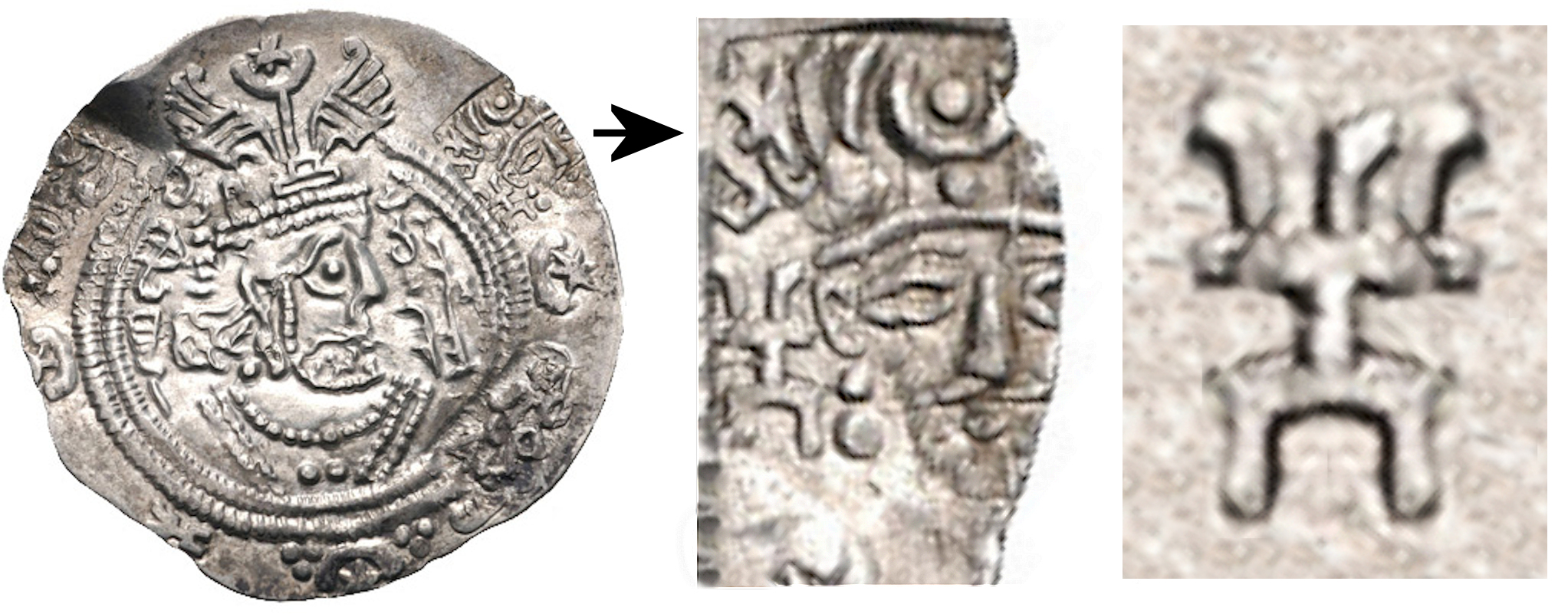|
Hephthalites
The Hephthalites (), sometimes called the White Huns (also known as the White Hunas, in Iranian languages, Iranian as the ''Spet Xyon'' and in Sanskrit and Prakrit as the ''Sveta-huna''), were a people who lived in Central Asia during the 5th to 8th centuries CE, part of the larger group of Eastern Iranian Huns. They formed an empire, the Imperial Hephthalites, and were militarily important from 450 CE, when they defeated the Kidarites, to 560 CE, when combined forces from the First Turkic Khaganate and the Sasanian Empire defeated them. After 560 CE, they established "principalities" in the area of Tokharistan, under the suzerainty of the Western Turks (in the areas north of the Amu Daria, Oxus) and of the Sasanian Empire (in the areas south of the Amu Daria, Oxus), before the Tokhara Yabghus took over in 625. The Imperial Hephthalites, based in Bactria, expanded eastwards to the Tarim Basin, westwards to Sogdia and southwards through Afghanistan, but they never went beyond the ... [...More Info...] [...Related Items...] OR: [Wikipedia] [Google] [Baidu] |
Tokharistan
Tokharistan (formed from "Tokhara" and the suffix ''-stan'' meaning "place of" in Persian) is a historical name used by Islamic sources in the early Middle Ages to refer to the area which was known as Bactria in Ancient Greek sources. By the 6th century CE, Tokharistan came under rule of the First Turkic Khaganate, and in the 7th and 8th centuries, it was incorporated into the Tang dynasty, administered by the Protectorate General to Pacify the West. Today, Tokharistan is fragmented between Afghanistan, Uzbekistan and Tajikistan. Names Several languages have used variations of the word "Tokhara" to designate the region: * Tokharistan may appear in ancient Indian sources as the Kingdom of Tushara, to the northwest of the Indian subcontinent. "Tushara" is the Sanskrit word for "snowy" "frigid", and is known to have been used to designate the country of Tukhara. In Sanskrit, it became तुखार (Tukhāra). * In ancient Greek, the name was Tokharoi ( ) or Thaguroi. * Tocha ... [...More Info...] [...Related Items...] OR: [Wikipedia] [Google] [Baidu] |
Nezak Tarkhan
Nezak Tarkhan (-710 CE) was a nomadic ruler of Tokharistan who led a revolt against the Arab commander Qutayba bin Muslim around 709 CE. Nezak Tarkhan is first mentioned in 651 CE as the Hephthalite ruler of Badghis, when he allied with the ''marzban'' of Merv against the Sasanian ruler Yazdegerd III. Yazdegerd III was defeated and barely escaped with his life, but he was murdered in the vicinity of Merv soon after, and the Arabs managed to capture the city of Merv the same year. In 659, Chinese chronicles still mentioned the "Hephtalite Tarkhans" (悒達太汗 ''Yida Taihan'', probably related to "Nezak Tarkhan"), as some of the rulers in Tokharistan who remained theoretically subjects to the Chinese Empire, and whose main city was Huolu 活路 (modern Mazār-e Sherif, Afghanistan).Referencing Tangshu XLIII, B, pp. 6-9 and Chavannes, Documents, p. 69, n. 2 in Yaqut al-Hamawi called Badghis "the headquarters of the Hephthalites" (). Thâbit and Hurayth ibn Qutba, who were broth ... [...More Info...] [...Related Items...] OR: [Wikipedia] [Google] [Baidu] |
Bactrian Language
Bactrian (, , meaning "Iranian") was an Eastern Iranian language formerly spoken in the Central Asian region of Bactria (present-day Afghanistan) and used as the official language of the Kushan and the Hephthalite empires. Name It was long thought that Avestan represented "Old Bactrian", but this notion had "rightly fallen into discredit by the end of the 19th century". Bactrian, which was written predominantly in an alphabet based on the Greek script, was known natively as (" Arya"; an endonym common amongst Indo-Iranian peoples). It has also been known by names such as Greco-Bactrian or Kushan or Kushano-Bactrian. Under Kushan rule, Bactria became known as ''Tukhara'' or ''Tokhara'', and later as '' Tokharistan''. When texts in two extinct and previously unknown Indo-European languages were discovered in the Tarim Basin of China, during the early 20th century, they were linked circumstantially to Tokharistan, and Bactrian was sometimes referred to as "Eteo-Tocharian" (i.e ... [...More Info...] [...Related Items...] OR: [Wikipedia] [Google] [Baidu] |
Nomadic Empire
Nomadic empires, sometimes also called steppe empires, Central or Inner Asian empires, were the empires erected by the bow-wielding, horse-riding, nomadic people in the Eurasian Steppe, from classical antiquity (Scythia) to the early modern era ( Dzungars). They are the most prominent example of non- sedentary polities. Some nomadic empires consolidated by establishing a capital city inside a conquered sedentary state and then exploiting the existing bureaucrats and commercial resources of that non-nomadic society. In such a scenario, the originally nomadic dynasty may become culturally assimilated to the culture of the occupied nation before it is ultimately overthrown. Ibn Khaldun (1332–1406) described a similar cycle on a smaller scale in 1377 in his Asabiyyah theory. Historians of the early medieval period may refer to these polities as "khanates" (after ''Khan (title), khan'', the title of their rulers). After the Mongol conquests of the 13th century the term Orda (orga ... [...More Info...] [...Related Items...] OR: [Wikipedia] [Google] [Baidu] |



